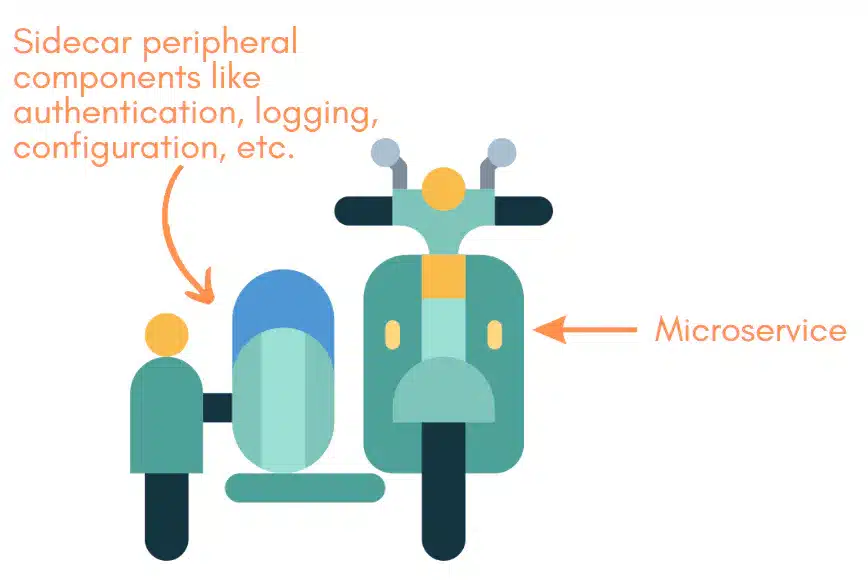Sidecar Pattern System Design
In this tutorial, we are going to discuss about the Sidecar Pattern System Design. You might be wondering, “Where can I use this pattern?” or “How does it fit into my system’s design?” Let’s explore this together through practical use cases and system design examples.

Use Cases: Where Does the Sidecar Pattern Shine?
The Sidecar Pattern is an incredible tool that can be used in a variety of scenarios. Here are some common use cases where the pattern truly shines:
1. Monitoring and Metrics Collection
Imagine you’re running an application with multiple instances. You want to gather metrics from each instance, but embedding monitoring code in each application would make things complex. This is where a sidecar can come in handy. The sidecar can handle metrics collection, leaving your application code clean and focused on its core functionality.
2. Logging
Logging is another area where the Sidecar Pattern can be incredibly useful. A sidecar can collect logs from the main application and forward them to a central logging system. This approach abstracts away the complexity of logging, making your application easier to manage.
3. Security and Authentication
Security is paramount, right? Here, a sidecar can play an essential role. Instead of embedding security and authentication logic into your main application, you can delegate it to a sidecar. This simplifies your main application and makes security measures more consistent and easier to update.
4. Networking Features
Networking is a complex beast. How about letting a sidecar take care of it? For example, a sidecar can handle service discovery, connection pooling, circuit-breaking, intelligent routing, and more. This allows your application to focus on its business logic without worrying about networking intricacies.
Now that we’ve discussed some use cases, let’s take a look at some system design examples that illustrate the Sidecar Pattern in action.
System Design Examples: The Sidecar Pattern in Action
Here are some examples of how you might incorporate the Sidecar Pattern into your system design.
1. Microservices Architecture
Microservices architecture is a perfect example of the Sidecar Pattern’s application. Each microservice, as a main application, can have a sidecar attached to it to provide ancillary services such as logging, monitoring, and service discovery.
Let’s take a moment to visualize this. Imagine a fleet of ships, each ship representing a microservice. The sidecars are like little boats accompanying each ship, helping with navigation, communication, and maintenance, while the ships focus on their main task.
2. Kubernetes and Istio
Another excellent example is Kubernetes, an open-source platform for managing containerized applications. In Kubernetes, the Sidecar Pattern is used extensively. One notable example is Istio, a service mesh for Kubernetes. Istio uses a sidecar proxy (Envoy) deployed alongside each service to handle all network communication, enforce policies, and collect telemetry data.
Picture this as a busy highway system, where each car (service) has a dedicated assistant (Envoy sidecar) for navigation, communication, and safety, enabling the driver to concentrate on driving.
In conclusion, the Sidecar Pattern is an incredibly powerful tool, but like all tools, it should be used wisely. As we’ve seen, it can greatly simplify your application and infrastructure management, but it also introduces new complexities. As always, it’s all about choosing the right tool for the job!
That’s all about the Sidecar Pattern System Design. If you have any queries or feedback, please write us email at contact@waytoeasylearn.com. Enjoy learning, Enjoy Microservices..!!